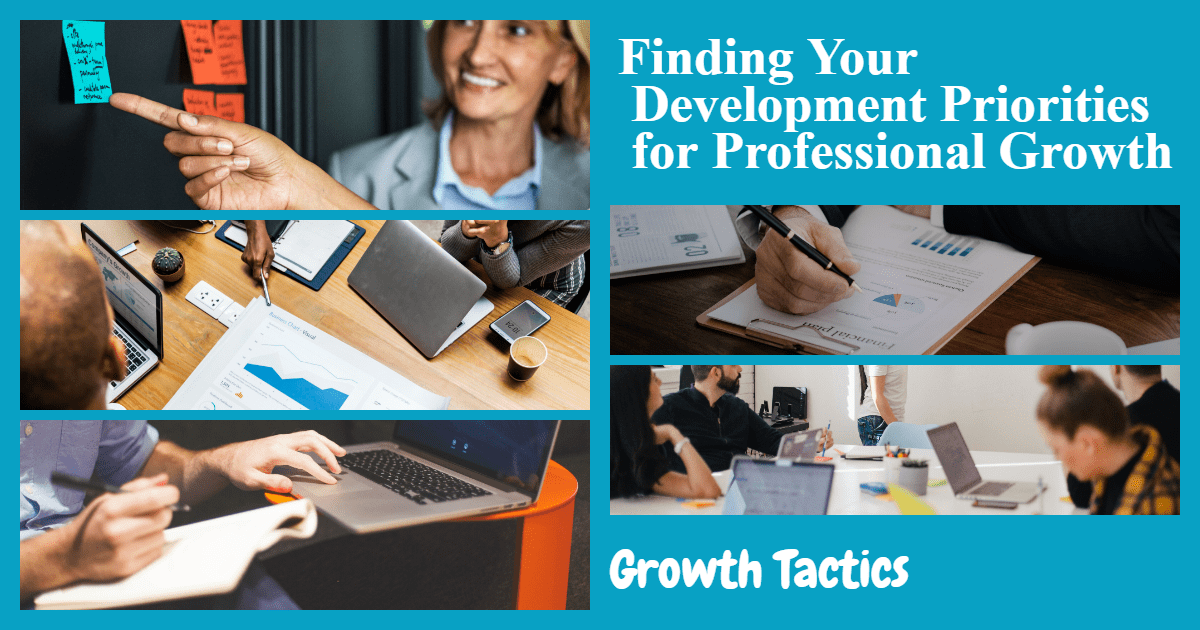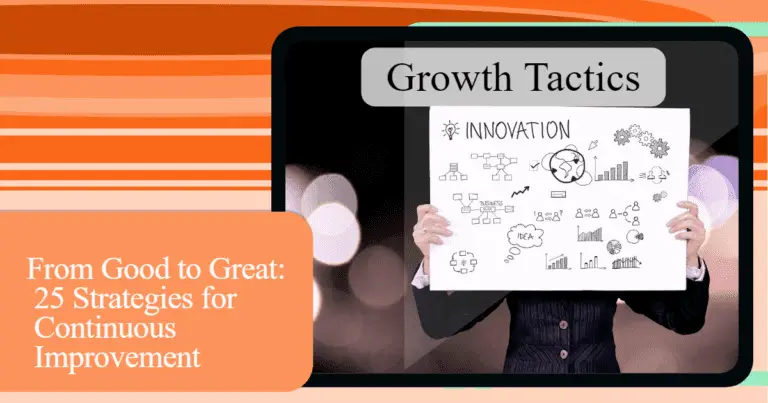In today’s rapidly changing business environment, continuous learning and professional development are essential for long-term success. As an employee, it is important to prioritize your development areas and create a development plan that aligns with your personal and professional goals.
By setting clear development priorities, you can improve your productivity, enhance your skills, and open doors to new opportunities within your organization. In this blog post, we will explore the key areas of development, the importance of setting development priorities, and strategies for identifying and prioritizing your development needs.
Jump To Section
1. Why are development priorities essential for professional growth?
Setting development priorities is essential for personal and professional growth. It allows you to focus your efforts on critical areas that will support your growth and success. Without clear priorities, you may find yourself overwhelmed with multiple development opportunities but lacking the time and resources to pursue all of them effectively. By prioritizing your development areas, you can improve your focus and work performance, adapt to new challenges, and continuously improve your skills and knowledge.
2. How to Identify Your Key Areas of Development?
Assessing Your Strengths and Weaknesses
One of the first steps in identifying your key areas of development is to conduct a self-assessment of your strengths and weaknesses. Reflect on your current skills, knowledge, and experiences to determine where your strengths lie and where there is room for improvement. Understanding your strengths can help you leverage them in your professional growth, while recognizing your weaknesses can guide you towards areas that require development.
Analyzing Skills and Competencies
Consider the specific skills and competencies that are essential for success in your current role. Identify the key skills that you need to perform your job effectively and efficiently. Additionally, think about the skills required for future positions or career advancements that you aspire to. By analyzing the skills and competencies needed for both your current role and future goals, you can prioritize areas for development that will support your career progression.
Seeking Feedback from Others
Feedback from colleagues, supervisors, and mentors can provide valuable insights into your performance and areas for improvement. Reach out to trusted individuals in your professional network and ask for feedback on your work, skills, and development opportunities. Their perspectives can offer a different viewpoint on your strengths and weaknesses, helping you identify blind spots and areas that you may not have considered.
Monitoring Industry Trends
The dynamics of industries are constantly evolving, and new skills and knowledge are often in demand. Stay informed about the latest trends, technologies, and advancements in your industry to identify emerging skills that may be valuable for your professional growth. Keeping abreast of industry developments can help you anticipate future skill requirements and proactively work towards acquiring them.
3. How to Prioritize Your Development Needs?
Alignment with Your Career Goals:
When prioritizing your development needs, consider how each development area aligns with your long-term career goals. Identify the skills and knowledge that are crucial for advancing in your chosen career path and prioritize them accordingly. By focusing on these areas, you can ensure that your professional growth is in line with your aspirations.
Relevance to Your Current Role:
Evaluate the relevance of each development area to your current role. Prioritize the skills and knowledge that directly contribute to improving your performance in your current position. By focusing on these areas, you can enhance your job competency and excel in your day-to-day responsibilities.
Organizational Development Priorities:
Take into account your organization’s development priorities and initiatives. Identify key areas of employee development that align with the goals and objectives of your organization. Prioritizing development areas that are in line with organizational priorities demonstrates your commitment to the company’s success and increases your chances of receiving support and growth opportunities.
Time Constraints:
Consider the time and resources available for your development efforts. Prioritize the development areas that can be realistically pursued within the available time frame and resources. By doing so, you can ensure that your development plans are manageable and achievable.
Personal Interest and Passion:
While it is important to prioritize development areas based on career goals and organizational priorities, also take into account your personal interest and passion. Developing skills and knowledge that you are genuinely interested in and passionate about can make the learning process more enjoyable and fulfilling. It can also fuel your motivation and job satisfaction, leading to better overall performance.
4. Strategies for Setting Development Priorities
Set SMART Goals:
Set SMART (Specific, Measurable, Attainable, Relevant, and Time-bound) goals for your development. Make sure your goals are specific and measurable, so you can track your progress. Ensure they are attainable and relevant to your career and prioritize them based on their importance and the time frame in which you want to achieve them.
Create a Development Plan:
Develop a comprehensive development plan that outlines the steps and resources needed to achieve your goals. Break down your goals into smaller, actionable tasks and allocate the necessary time and resources for each task. This will help you stay organized and focused on what needs to be done.
Seek Feedback and Guidance:
Seek feedback and guidance from mentors, colleagues, and supervisors to gain insights into your development needs and priorities. They can provide valuable perspectives based on their expertise and experience, helping you prioritize your development efforts effectively.
Embrace a Growth Mindset:
Adopt a growth mindset, which is the belief that your abilities can be developed through dedication and hard work. Embracing this mindset will help you approach your development journey with a positive attitude and a willingness to learn from challenges and setbacks. It will also encourage you to take risks and step out of your comfort zone.
Continuous Learning and Adaptability:
Prioritize continuous learning and stay adaptable to changing circumstances and industry trends. Allocate time for professional development activities such as attending workshops, webinars, or industry conferences. Stay updated with emerging skills and knowledge in your field to ensure that your development efforts remain relevant and aligned with industry advancements.
Conduct a Skills Gap Analysis
Perform a skills gap analysis to identify the areas where you need to develop and improve your skills. Compare your current skillset with the skills required for your desired career path or future job roles. This analysis will help you identify the top priorities for development.
Evaluate the Impact
Assess the potential impact of each development area on your professional growth and career advancement. Consider how mastering a particular skill or gaining specific knowledge will benefit you in your current role and open up new opportunities in the future. Prioritize areas that have a higher potential for impact.
Consider Industry Trends and Demands
Stay informed about the latest industry trends and demands. Research the skills and knowledge that are highly sought-after in your industry. Prioritize development areas that align with these trends and demands, as they can enhance your marketability and competitiveness.
Balance Short-Term and Long-Term Goals
Strive for a balance between short-term and long-term development goals. While it’s important to address immediate skill gaps, also focus on long-term development that aligns with your career aspirations. By balancing both, you can ensure continuous growth while meeting immediate needs.
Monitor and Adapt
Regularly monitor your progress and adjust your priorities as needed. Assess the effectiveness of your development efforts and make necessary adjustments. Be flexible and adapt to changes in your goals, industry, or personal circumstances. Regularly reviewing and refining your priorities will help you stay on track and make the most of your development journey.
Remember, setting development priorities is an ongoing process. It requires self-reflection, assessment, and adjustment. By utilizing these strategies, you can effectively set and prioritize your development needs to achieve continuous growth and professional success.
Fostering Employee Development: Strategies for Growth and Success
1. Encourage a Learning Culture
Create a supportive work environment that values continuous learning and development. Emphasize the importance of education and provide resources for employees to enhance their skills and knowledge. Encourage employees to pursue professional development opportunities, such as attending conferences or workshops, and support their efforts to expand their expertise.
2. Implement Individual Development Plans
Work with employees to create individual development plans that align with their career goals. These plans should outline specific objectives and actions to help employees acquire the necessary skills and knowledge for growth. Regularly review and revise these plans to ensure they remain relevant and on track.
3. Offer Training and Mentoring Programs
Provide training programs that address the needs of your employees and help them develop the skills required for their roles and future advancement. Additionally, establish mentoring programs to pair experienced employees with those seeking guidance and support. These programs create opportunities for knowledge transfer and professional growth.
4. Provide Feedback and Recognition
Regularly provide constructive feedback to employees to help them understand their strengths and areas for improvement. Recognize and celebrate their achievements and milestones along their development journey. Positive feedback and recognition not only motivate employees but also reinforce the value your organization places on their growth and development.
5. Support Work-Based Learning
Encourage employees to engage in work-based learning experiences, such as cross-functional projects or job rotations. Exposing employees to different roles and responsibilities helps them gain new skills and perspectives, while also fostering a more well-rounded workforce within your organization.
6. Align Development with Organizational Goals
Ensure that employee development efforts align with the strategic goals and objectives of your organization. When employees understand how their growth contributes to the overall success of the company, they are more likely to be motivated and engaged in their development efforts.
7. Embrace Technology for Learning
Leverage technology to provide accessible and interactive learning opportunities. Implement e-learning platforms, webinars, or online courses to enable employees to learn at their own pace and convenience. Utilize digital tools for knowledge sharing and collaboration, fostering a continuous learning environment.
8. Support Career Advancement Opportunities
Provide clear pathways for career advancement within your organization. Offer opportunities for employees to take on new responsibilities, lead projects, or move into higher positions. Demonstrating a commitment to employee growth and advancement encourages retention and motivates employees to invest in their development.
By prioritizing and implementing these strategies, organizations can foster a culture of employee development, increase employee engagement and retention, and ultimately contribute to the long-term success of both the employees and the organization.
Conclusion
Finding your development priorities is an essential step toward professional growth. By identifying your key areas of development and setting clear priorities, you can enhance your skills, improve your work performance, and open doors to new opportunities. Remember to align your development priorities with your career goals, take into account organizational priorities, and consider your personal interests and passion. With a well-defined development plan and a commitment to continuous learning, you can achieve long-term success and fulfillment in your professional journey.








